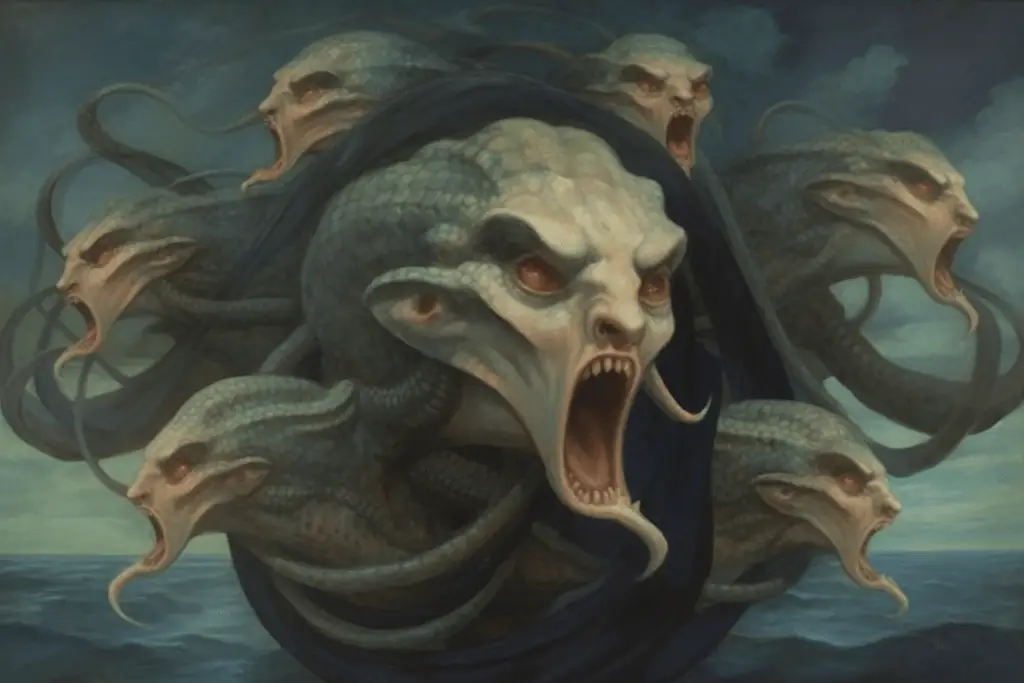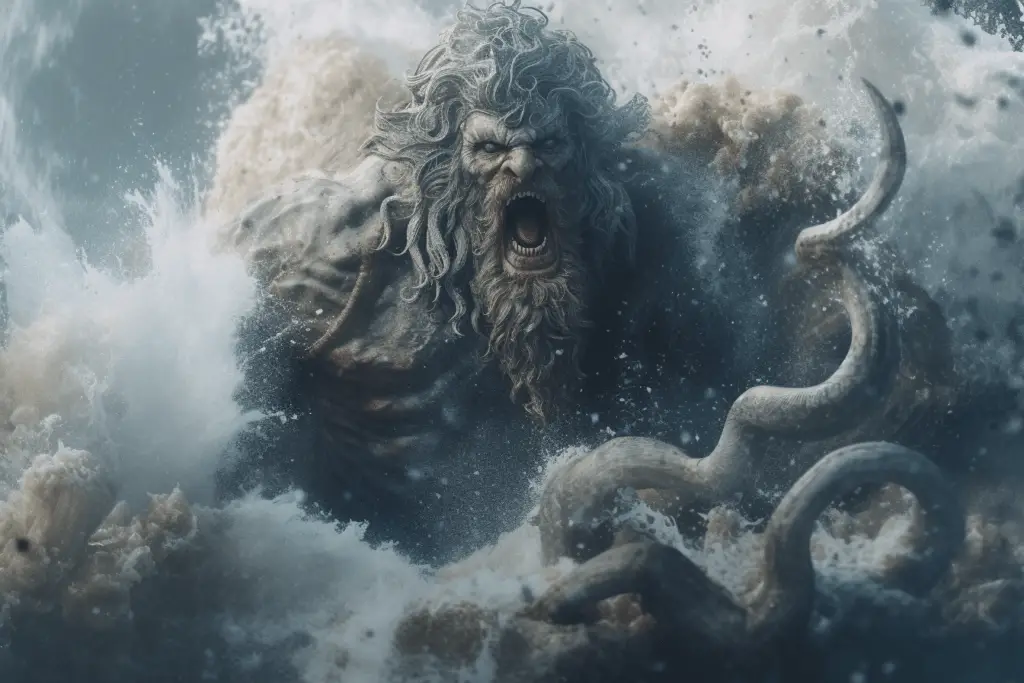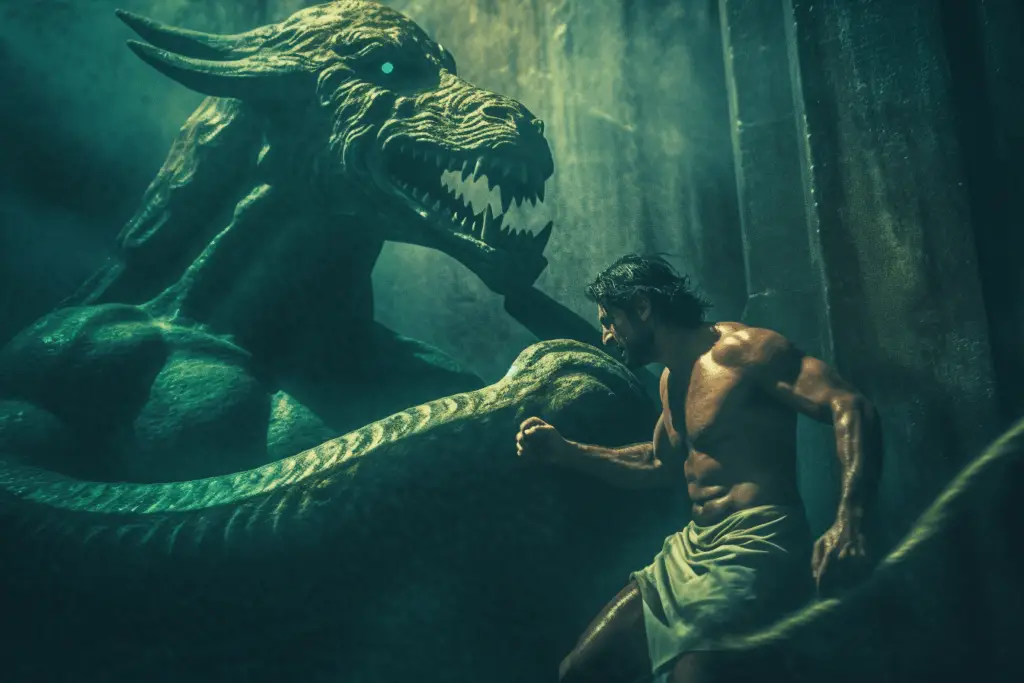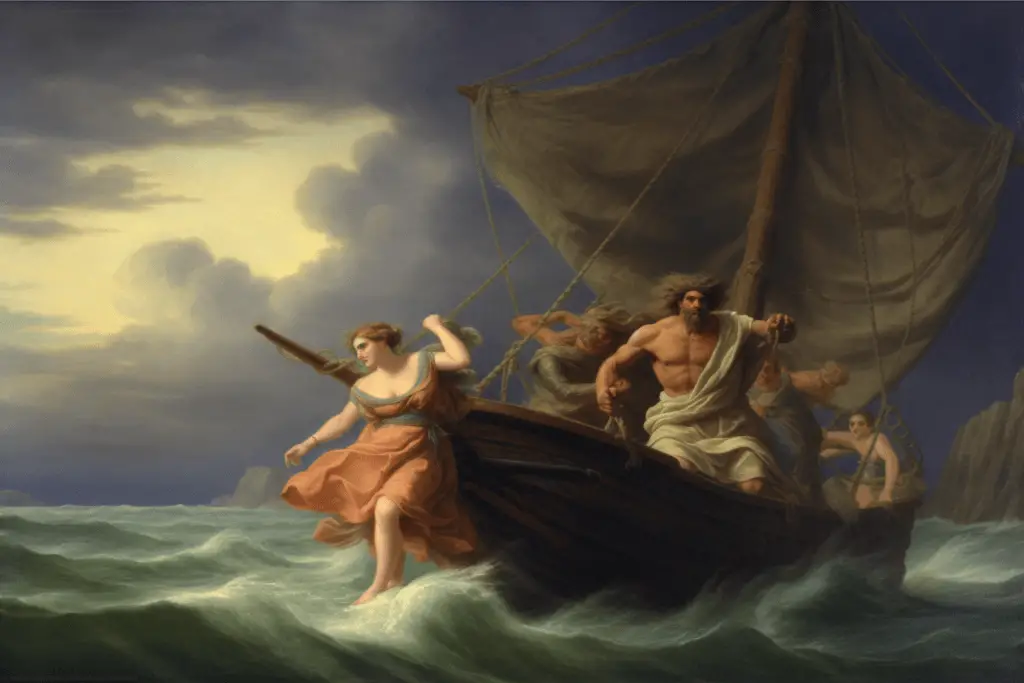Share the Lore!
By: Alex Postrado
How Can One Escape The Monstrous Duo of The Strait of Messina
To be “caught between a rock and a hard place” sure sounds hopeless.
After all, it is an age-old saying that denotes a situation that requires you to choose between two equally difficult options with barely a chance of victory.
Little do most people know about the mythical Greek monsters that breathed life into this expression. But, in the stories, they are known as Scylla and Charybdis.
Scylla is a six-headed, cave-lurking beast, while Charybdis is a somewhat ambiguous 一 possibly whirlpool-like 一 sea monster.
Both are beset by the conspicuously narrow Strait of Messina 一 working in tandem along the opposite sides of the waters, making it nearly impossible for anyone to traverse safely.
But take note: nearly impossible. Not entirely out of the question!
So, how does one survive the “deadly clutches” of Greek mythology’s infamous duo, Scylla and Charybdis?

WHO IS SCYLLA?
Journeying across the narrow channel of water, identified today as the Strait of Messina means either facing the wrath of the sea giant Charybdis or braving the coast where the rocky home of Scylla happens to be located.
There is no easy telling as to which of these equally threatening routes assure safe passage, but should you pick navigating nearby Scylla’s nest, prepare to meet the feared 12-foot tall, six-headed monster!
Greek poet Hesiod describes Scylla as the daughter of Hecate, goddess of magic and witchcraft 一 while Homer, on the other hand, names the nymph Crataeis as Scylla’s birth mother.
Further confusion circles around Scylla’s father, but among the contenders are Typhon, Phorcys, Tyrrhenius, and Triton 一 all of whom are sea-related figures from Greek mythology.
Nevertheless, we know from earlier traditions that Scylla is a cave-dwelling beast with six “long scrawny necks” and “a triple row of sharklike teeth” which signal doom for passing mariners.
And the tricky thing about her is that she can prey at leisure from the comfort of her lair by simply sticking out her snaky heads to grab whatever victim drifted within her reach.
Although grisly remembered by many as the villain who devoured six of Odysseus’s companions in the Odyssey, the Scylla in other written retellings 一 such as Ovid’s Metamorphoses 一 was said to not have always been a monster, but rather a mortal human whose beauty cost her the ultimate transformation.
And so, through the jealousy of either the sorceress Circe or the sea nymph Amphitrite, the monstrous Scylla was born.
WHO IS CHARYBDIS?
On the opposite side of the infamous strait, lies in wait, the intimidating and unquenchable monster of the sea floor, Charybdis.
No tale can tell exactly what Charybdis looks like. Perhaps, it boils down to the challenge of describing a being that has never even been seen before 一 not by any hero, and most certainly, not by any man.
However, the myths found a way of interpreting the menaces of Charybdis through what we know today as whirlpool or maelstrom.

Rapid and violent, a giant whirlpool seemed to be the perfect embodiment of Charybdis to the ancient Greeks, due largely to their understanding that this sea monstrosity sucks in everything close at hand 一 ships and sailors alike 一 to the bottom of the ocean, never to be seen again.
They say that this seafloor is where Charybdis actually resides 一 thrown there and chained by Zeus as punishment for stealing Heracles’s cattle and aiding sea god Poseidon’s scheme of expanding his territory by flooding some areas of what was supposed to be land.
However, according to some stories, before Charybdis was expelled from the surface, she was by no means a monster of the deep.
Much like Scylla, Charybdis was once the beautiful daughter of two primordial deities 一 arguably, Gaia and Pontus, or in some accounts, Poseidon himself. And had she not angered Zeus, she might not have been cursed to eternally suck in the waters in the strait, three times every day.
HOW ODYSSEUS ESCAPED SCYLLA AND CHARYBDIS
If there is anyone most suited to lead a voyage past the narrow channel where Scylla and Charybdis are said to work their evils, it would definitely be Odysseus 一 the Greek hero of Homer’s Odyssey.

In the myths, Odysseus is one of the few people to survive the ill-famed pair of sea monsters. The encounter took place right when Odysseus and his men were traveling back home after the Trojan war.
However, what sets Odysseus apart from other voyagers is that he and his crew enjoyed no aid nor guidance from any of the gods.
In fact, their only shot in the arm came from the sorceress and enchantress Circe, who told Odysseus that it would be nearly impossible to “pass between Scylla and Charybdis unscathed,” but nevertheless advised them to pick “the lesser of two evils” 一 that being the bloodthirsty Scylla.
In the end, it did prove wiser for Odysseus to take the odds with the ravening six-headed beast 一 even if it meant losing 6 of his men in the process 一 rather than testing the tumultuous might of Charybdis’s pull, which might have mercilessly swallowed his entire ship.

OTHER HEROES TO SURVIVE THE MONSTROUS TANDEM
The very first tale recounting a victorious passage through the waters of Scylla and Charybdis was that of Jason and the Argonauts, and their arduous quest for the mythical Golden Fleece.
Unlike Odysseus, however, Jason had two of the Twelve Olympians watching over him: Hera and Athena. And to ensure the hero’s safety, Hera asks the sea nymph Thetis 一 along with the other Nereids 一 to lend a helping hand to the Argo, as the ship pierces its way through the perilous strait.
Sometime after, former Argonaut Heracles 一 renowned for his “heroic feats of strength” 一 once again runs into the hungry Scylla.
While on his way to deliver the cattle of Geryon to King Eurystheus, as part of his tenth labor, Heracles passes by Scylla’s lair. The monster proceeds to devour some of the herd, so Heracles bites back by slaying Scylla once and for all 一 if only Phorcys had not restored Scylla back to life.
Finally, in the Aeneid, the narrow gap of water where Scylla and Charybdis lurk was also mentioned. Trojan prince Aeneas refuses to sacrifice any of his men to the twin dangers up the strait ahead, so he decides to “sail southwards” 一 taking the longer, yet safer, route instead.
WHAT SCYLLA AND CHARYBDIS REPRESENT
As writer Nora McGreevy puts it in one of her articles for the Smithsonian Magazine, “Monsters reveal more about humans than one might think.“
And Scylla and Charybdis are no different.
To be “caught between Scylla and Charybdis” is one poetic way of touching on the left-and-right dangers ancient Greek mariners face every time they embark on voyages across the vast uncharted waters, particularly in the Mediterranean.
The dilemma of having no good options to choose from 一 and practically no assurance of safety 一 whenever they are at sea.
Scylla and Charybdis, in this sense, serve as a myth-rooted forewarning to sailors.
A reminder for them to always keep an eye out for the abundance of maritime threats that are all as real as they can get.
References:
Scylla and Charybdis - Greek mythology Scylla and Charybdis - World History Encyclopedia Scylla and Charybdis: Terror on the High Seas - History Cooperative Scylla and Charybdis in Greek Mythology - Greek Legends and Myths Scylla - Theoi Project Charybdis - Theoi Project
